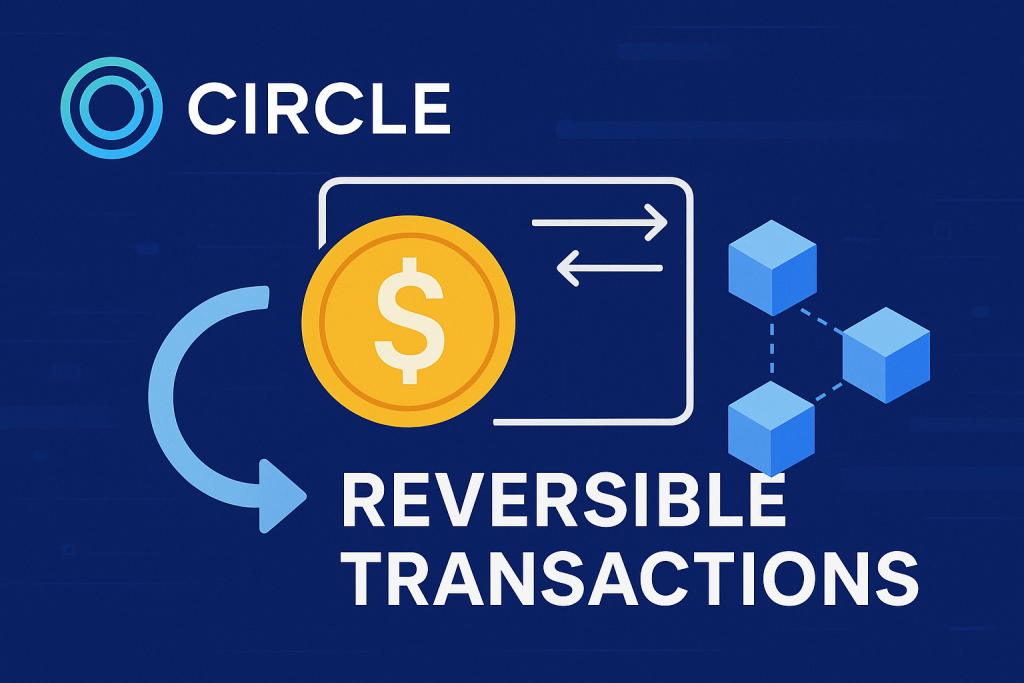Circle, the company behind the widely used USD Coin (USDC), is reportedly exploring a new mechanism that could allow users to reverse transactions under certain conditions. The initiative is aimed at building stronger consumer protection, particularly against fraud, hacks, and accidental transfers — long-standing challenges in the crypto industry.
A Counter-Payment Layer, Not a Blockchain Rewrite
According to Circle’s preliminary discussions, the feature would not compromise the immutability of blockchain records. Instead, it would function through a counter-payment layer, where disputed transfers could be rolled back by issuing a controlled refund. This process would mimic chargeback systems in traditional banking and card networks, providing an extra layer of trust for users without undermining the transparency of the blockchain.
Why This Matters for Stablecoins and DeFi
Stablecoins like USDC are increasingly used for cross-border payments, merchant settlements, and DeFi protocols. However, their adoption by businesses and institutions has been limited by the lack of consumer safeguards that are standard in the legacy financial world.
- Fraud Protection: A reversible transaction model could reduce risks of phishing attacks and wallet hacks, making USDC safer for mainstream users.
- Institutional Adoption: Corporations and payment providers often require mechanisms for dispute resolution. Circle’s model could make USDC a more viable settlement option.
- Market Differentiation: While Tether (USDT) dominates the stablecoin market, Circle may gain a competitive edge by offering a more compliance-friendly and user-protective product.
Community Reactions: Security vs. Core Principles
The proposal has already sparked debate among crypto advocates. Critics argue that enabling reversals, even through a separate layer, could erode one of crypto’s foundational principles — the finality of transactions. Supporters, however, view it as a natural evolution toward mainstream finance integration, especially as regulators worldwide push for stronger safeguards in digital assets.
Regulatory Alignment
This move also aligns with the growing regulatory scrutiny in both the U.S. and Europe. With frameworks like MiCA in the EU and ongoing U.S. discussions about stablecoin legislation, Circle’s approach could position it as a regulatory leader, setting standards for consumer protection while maintaining blockchain efficiency.
What’s Next?
Circle has not provided a launch date or technical specifics, indicating the concept is still in the research and pilot stage. However, if successful, the model could fundamentally reshape how stablecoins are perceived — shifting them closer to regulated payment instruments while still operating within the crypto ecosystem.
For the DeFi space, this could open new opportunities: lending protocols, payment apps, and exchanges may integrate such features to provide safer and more user-friendly services.
